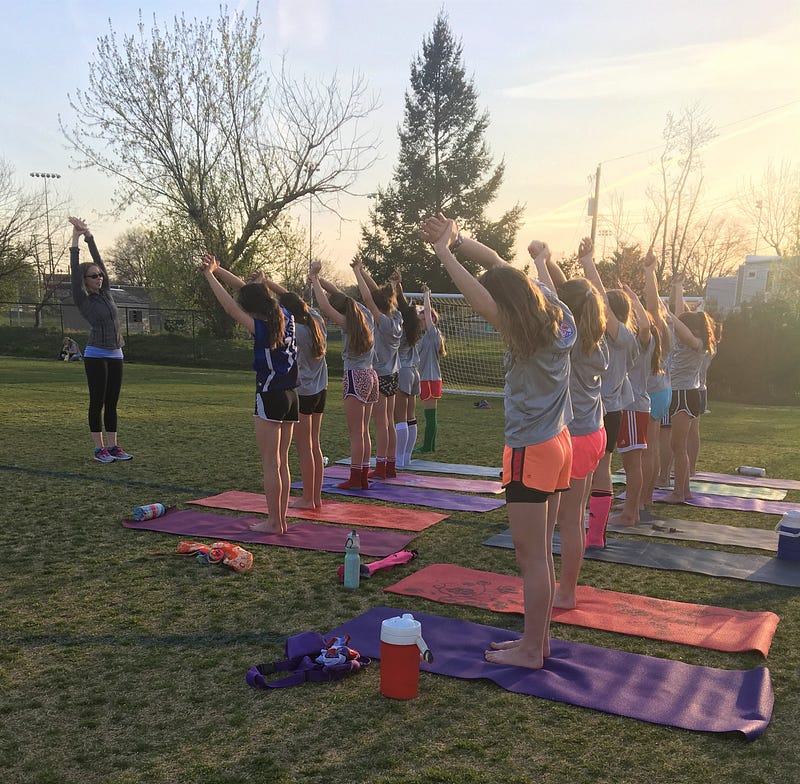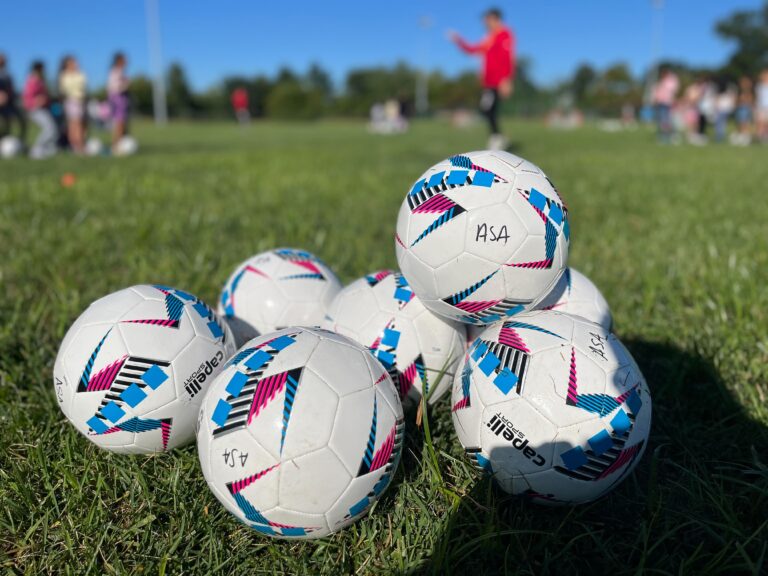Jennifer Schwartz is a Master Level Muscle Activation Techniques™ Specialist and certified Exercise Physiologist. She oversees Alexandria Soccer Association’s Injury Prevention and Fitness program and her exercise and rehab practice in Alexandria.
Exercise has an important transfer for our young athletes. What makes a player stronger can also prevent injury. Total body athletic movements require muscle power. Both flexibility and durability can improve by focusing on the muscles adaptation capabilities. The more efficient the muscles are at stabilizing and moving the joints, the faster and more reliable the player’s technical skill can be executed.
Keep all of this in mind as I summarize a few areas of research. The main theme is injury prevention or as we call it at Alexandria Soccer Association, ‘building resistance to injury’.
Recommendations for 10–15 minutes of exercise performed 2–3 times per week
A meta-analysis published in Frontiers of Physiology reviewed the most reliable papers on injury prevention exercise routines for basketball, soccer, and football in regards to preventing injuries to hips, knees, and feet. The pooled data determined that injury rates were reduced by 42% with 10–15 minutes performed 2–3 times per week. The scientific reviewers concluded that the benefits can be seen in as little as 3 months.(1)
They examined 16 trials of athletes, 21 or younger, that used a specific type of exercise called Neuromuscular Training. Some of these studies looked at warm-up settings specifically. There were multiple types of exercise components including strength, balance, flexibility, plyometric, speed, and agility exercises.
Previous concussion increases a player’s injury risk overall
Research says that a concussion can increase an athlete’s risk of a subsequent soft tissue (muscle, tendon, or ligament) injury. An observational study pulled data from 18,000 athletes (96 high schools across 26 states) which concluded that there is 34% increase in soft tissue injury in the months following a concussion.(2) Another study of 73 college basketball, soccer, and football players says that sustaining a concussion increased a soft tissue injury odds by 3.4%.(3)

Important takeaways
Alexandria Soccer Association’s injury prevention efforts focus on Pre-Session Routines. I can’t guarantee any single exercise can impact a player because the players are in various stages of mental and physical growth. I can support our players with consistency in their efforts and offer science backed exercise knowledge.
When unfortunate concussions occur the symptoms should most certainly be monitored for an array of changes that are related to the brain health of the player. As a practitioner I explain that experiencing a concussion can have ‘invisible’ symptoms that will feel very different from other sport injuries.
This is simply because we can’t see the brain inflammation causing the various emotional, mental, or physical symptoms. Perhaps there is more to this inflammation related to concussions that could cause an injury rate increase? Perhaps the vestibular system needs to be monitored and tested more attentively?
It is not controversial to state that concussions can be linked to mental illness.(4) The disease, Chronic Traumatic Encephalopathy (CTE), soley describes the long-term brain inflammation caused by leaky blood vessels directly related to ‘hits’ to the head.(5) As far as injury prevention goes, extra measures should be made beyond the Return to Play protocol. Examples of these extra measures would be to incorporate exercise, Physical Therapy, meditation, healing nutrition or supplements.
Account for high school sports and playing multiple times a week
Injury prevention is not limited to a single focus, but a practice of consistent healthy habits. When it comes to exercise, the time before training and warm-ups is ideal. For every hour that a player is training and playing over a weeks time (recommendation for 13 years and up), they should be performing 5 minutes of exercise.
(1) https://www.ncbi.nlm.nih.gov/pmc/articles/PMC5694483/
(2) https://www.ncbi.nlm.nih.gov/pubmed/29140128
(3) https://www.ncbi.nlm.nih.gov/pubmed/27544666
(5) https://whdh.com/news/study-hits-not-concussions-cause-degenerative-brain-disease/



